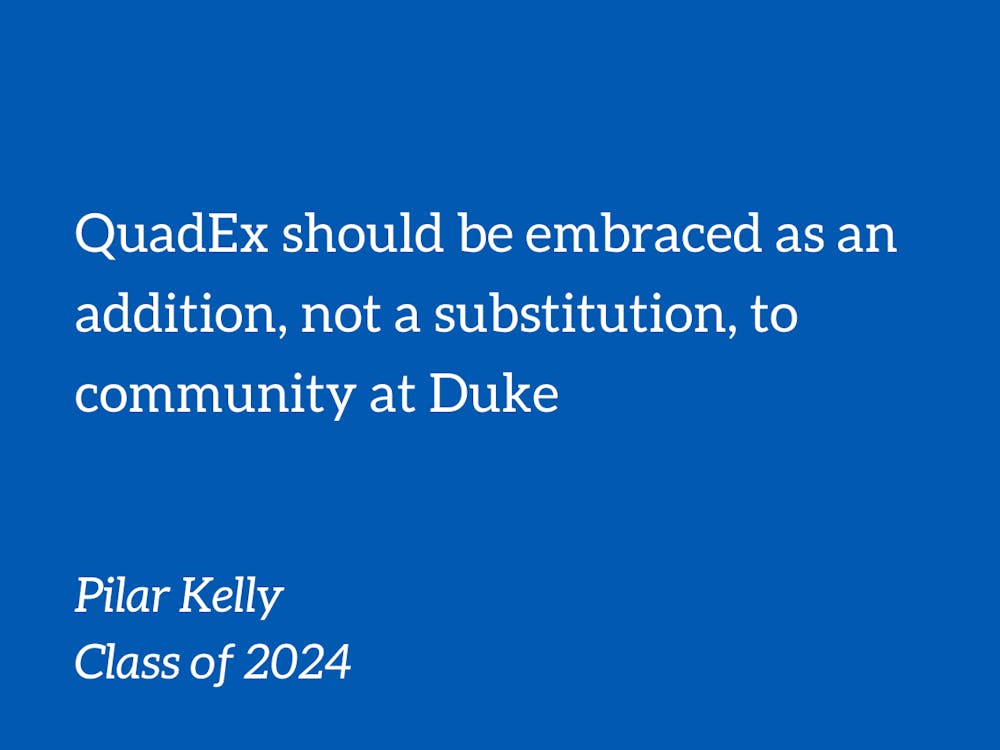Freshman year is about trial and error. You start with a blank canvas without many of the expectations of the life you left behind. The newfound freedom is astounding. Soon, that canvas begins to be colored by the people you meet and the decisions you make: joining and staying in communities when you feel understood, and leaving when you don’t. I’m not saying this process is easy; it can take weeks, months or even years to finally feel like you have found the right people. But I do think this experimental process is essential to self-discovery. You uncover what you truly value in relationships and who makes you feel the best.
Some people feel most comfortable being a part of one strong community. Often, however, there is value in being part of multiple communities that reflect different aspects of a personality. It’s as if each community is a different pigment added to your canvas, resulting in a more vibrant portrait. Duke’s ban of Selective Living Groups (SLGs) in accordance with QuadEx insinuates that instead of navigating multiple social groups, students must stay within the bounds of their built-in quad communities.
QuadEx, Duke’s new “inclusive living and learning model”, emulates the house systems at Harvard and Yale. The QuadEx website lists more “fun,” “laughter,” “together” and “exploration,” as benefits of the new model, along with less “stress,” “anxiety” and“conformity.” Whether we like it or not, QuadEx is here to stay. The new residential system, along with a complete overhaul of freshman orientation, is fully underway. My issue is not with QuadEx itself. It’s that instead of treating QuadEx as an addition to Duke social life, administration is treating it as a replacement.
Somewhere along the noble pursuit of a culture of belonging, Duke has lost sight of the possibility– and value–of hosting various communities across campus at once, communities that reflect different aspects of each student's multifaceted identity. And in banning SLGs, it is destroying some of the most diverse and inclusive social groups on campus, some which have been around for decades. Administration views SLGs as diametrically opposed to Quad-Ex’s “inclusive living learning model.” But in reality, SLGs can, and should, coexist without disrupting the rollout of QuadEx.
Perhaps the dissonance lies in the misleading label of “selective living group.” In reality, these groups do not rely on actually living in-section to build community. Groups such as Mirecourt and Maxwell have remained strong without having sections for years. They still thrive through on-and-off campus events, shared interests, service and traditions (let’s not forget that Mirecourt invented K-Ville tenting). SLGs hold rush sophomore year– therefore, under QuadEx, students could still live their first two years in their Quad as designed. Throughout sophomore year, if a student chooses to join an SLG, they would continue building community in their quad while getting to know peers from other quads, as well as upperclassmen, through SLG events. They would enter junior year with two communities: one built-in, one found.
SLG’s culture of inclusion and belonging align quite strongly with the values QuadEx claims to epouse, providing an alternative for students that may feel alienated from a predominantly white, wealthy and heteronormative Greek life. SLGs do not enjoy the financial and structural support of the national chapters and alumni donors of Greek organizations which afford them the power to disaffiliate from Duke and retain their potency. Greek life will continue to thrive as part of the Durham Panhellenic Association, which means that eliminating SLGs will only narrow the options for Duke students searching for a found community. Instead of a balanced social environment of around 30% Greek, 30% SLG/LLC and 30% independent, students will face a binary choice: go Greek or stay independent.
Instead of trying to forge inclusion by boxing students in a single QuadEx community, Duke should foster the growth and creation of social groups that can reflect Duke’s diverse student body. There are strengths to the integrated residential and social model: kids have the opportunity to build community with students they might not otherwise interact with. I don’t doubt that these houses will form a healthy and vibrant environment for underclassmen. Everyone has an inclusive “home base” supported by faculty fellows, mentorship and resources.
But there is something special about a found community that members have opted in to because of a shared identity or interest. This is especially true for minority identities at Duke at risk of being overpowered by normative hierarchies. QuadEx should be embraced as an addition, not a substitution, to community at Duke. At the juncture between adolescence and adulthood, exploring different communities is essential to figuring out who we want to surround ourselves with, what we want to stand for and who we want to become.
Pilar Kelly is a Trinity junior. Her column runs on alternating Tuesdays.
Get The Chronicle straight to your inbox
Signup for our weekly newsletter. Cancel at any time.
Pilar Kelly is a Trinity junior and an opinion columnist for The Chronicle's 118th volume.

